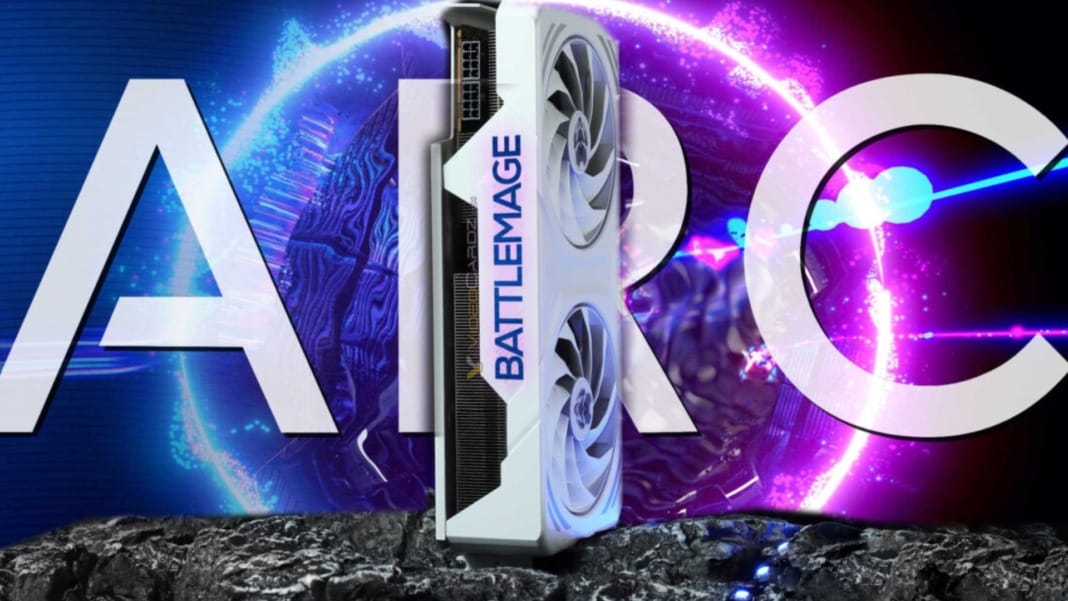Thanks to a recent leak on Geekbench, you now have an early glimpse at Intel’s upcoming Battlemage GPU. This is the first time a discrete GPU from Intel’s Battlemage series has been spotted on a benchmarking platform, offering insight into what could be a significant leap forward in Intel’s graphics capabilities. The listing, first found by Benchleaks, features a test system powered by an Intel Core i5-13600K processor paired with what is labelled as an “Intel Xe Graphics RI” GPU.
[GB6 GPU] Unknown GPU
— Benchleaks (@BenchLeaks) September 25, 2024
CPU: Intel Core i5-13600K (14C 20T)
CPUID: B0671 (GenuineIntel)
GPU: Intel Xe Graphics RI
API: Open CL
Score: 97943
PCI-ID: 8086:E20B
VRAM: 11.6 GBhttps://t.co/GTPSvypbev
This new GPU scored 97,943 points on the OpenCL benchmark, positioning it slightly below the Nvidia GeForce RTX 4060 and Intel’s own Arc A770. On AMD’s side, the performance places it somewhere between the Radeon RX 7700 XT and RX 7600 XT, offering a competitive middle ground. The GPU’s PCIe ID (E20B) links it to Intel’s next-generation Battlemage architecture, as confirmed through the Linux kernel driver database. Interestingly, according to the database, this specific GPU appears to be the second-strongest in the series, which lists five Battlemage models.
Performance compared to rivals
While the benchmark places the GPU in a solid performance range, it’s important to remember that this is just one early test, not one based on a real-world gaming scenario. The GPU being benchmarked is also likely an engineering sample, meaning the final version might have slightly different specifications.
As Nvidia prepares to launch its RTX 50-series cards and AMD continues working on its RDNA 4 series, Intel’s Battlemage will need to deliver competitive performance to carve out space in the market. So far, this early result suggests that Intel is still working to refine its offering.
Regarding specs, the Battlemage GPU showcased features 160 compute units (equivalent to 20 Xe cores), 12GB of VRAM, and a boost clock speed of up to 2,850 MHz. While the core count is lower than that of Intel’s Alchemist-based Arc A770 (32 Xe cores) and A750 (28 Xe cores), the higher boost clock speeds suggest improved performance in certain areas. This balance between core count and clock speed could be crucial in how this GPU competes with its rivals.
Intel’s next step in GPU development
One of the major advancements in the Battlemage series is the transition to Intel’s new Xe2 architecture, which refines the original Xe architecture seen in the Arc series. This update is expected to improve power efficiency, ray tracing capabilities, and AI-based upscaling technologies like Intel’s XeSS, which aims to compete with Nvidia’s DLSS and AMD’s FSR.
Intel has also focused on driver support and software optimisations, especially given the mixed reception of the Arc A750 and A770 GPUs, where users highlighted issues with stability and performance. The improvements in the Xe2 architecture could address these problems and deliver a more polished user experience.
Intel’s efforts in the discrete GPU market have shown promise, but the company has struggled to gain significant traction against well-established competitors like Nvidia and AMD. The Battlemage series could be Intel’s opportunity to make a more impactful entry into this highly competitive space, especially if they hit the right balance of performance, pricing, and software support.
While there’s no official word yet on pricing or availability, industry speculation suggests that Intel might aim for an early 2025 release for the Battlemage GPUs. With many consumers eager to see how Intel will compete with Nvidia and AMD in the next generation of graphics cards, Battlemage is shaping up to be a pivotal release for the company.





